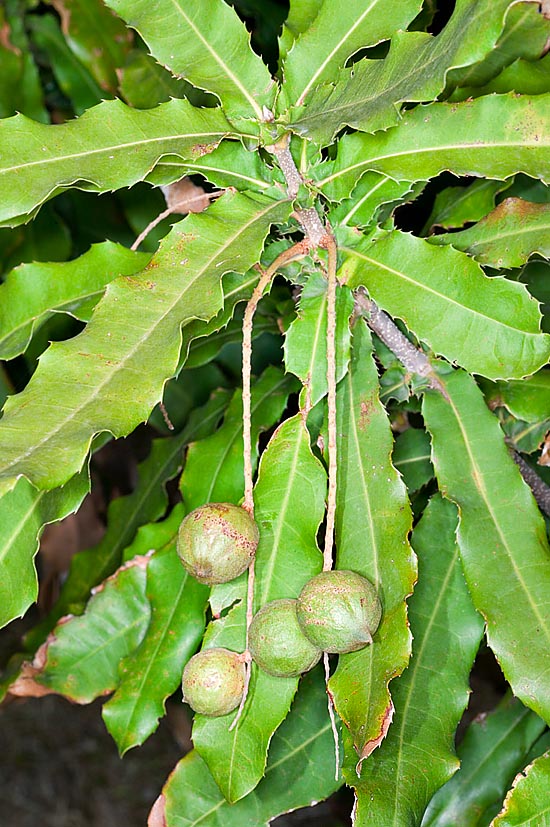Macadamia tetraphylla is a tree in the Proteaceae family, native to southern Queensland and northern New South Wales in Australia. Common names include macadamia nut, bauple nut, prickly macadamia, Queensland nut, rough-shelled bush nut and rough-shelled Queensland nut
This species has dense foliage and grows up to 18 metres in height. The leaves, which have toothed margins, are 7 to 25 cm in length. It has long, pendent creamy pink to purple flowers, followed by woody, rounded fruits which are 2 to 3 cm in diameter and contain edible seeds.
It has been introduced to Mexico and has done well in the states of Michoacán and Jalisco and has become an important export crop for the Mexican market. Hawaii is the largest exporter of this crop worldwide.
Macadamia tetraphylla was the first Australian native food plant to be grown by non-indigenous Australians as a commercial crop. The first commercial plantation of macadamia trees were planted in the early 1880s by Charles Staff at Rous Mill, 12 km southeast of Lismore, New South Wales, consisting of M. tetraphylla.[3] Seedlings from the original plantation were used as rootstock for grafted modern varieties well into the 20th century. This original plantation was finally cleared and replaced with grafted modern varieties in the 1990s.
Ironically, even as the macadamia has spread worldwide in commercial agriculture, it is now listed as a vulnerable species in its native Australia due to habitat loss and degradation. The loss and impoverishment of its habitat has resulted from clearance of lowland rainforest for agriculture and urban development; invasive weeds; and poorly-designed fire management systems.
